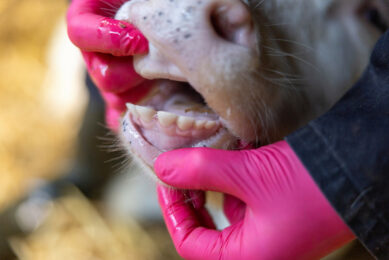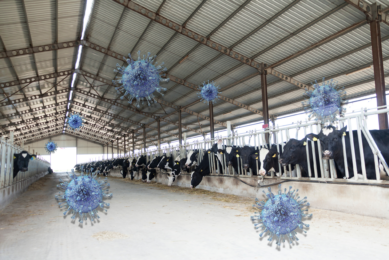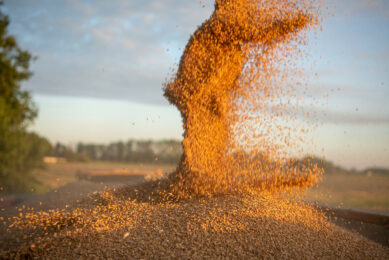US H5N1 dairies receive funds, China dairy pull back

Some focus points in the dairy market – Chinese buyers pulled back on the latest dairy auction on 19 June, but Southeast Asian and Middle Eastern buyers took up the slack. Meanwhile, 18 US farms have so far received federal funds to combat an outbreak of the H5N1 avian flu virus and NZ dairy giant Fonterra announced its opening forecast.
Overall prices remain around 10% or so above their long-term averages, according to chief economist Kelly Eckhold at Westpac NZ: “Some upside risk to our milk price forecast of NZ$8.40 (US$5.14) per kg for the 2024-2025 season remains, but it’s early days.” The dairy auction was more mixed than others recently. Futures markets had suggested a modestly weaker outcome, which did eventuate. Dairy prices fell 0.5%, as did whole milk powder (-2.5%) and Cheddar prices (-1.0%), while skim milk powder (0.7%) and butter (6.2%) rose
Fonterra milk price
NZ dairy giant Fonterra has announced its opening forecast of the farmgate milk price for the new season. As has been the company’s practice in recent years, Fonterra specified it as a range of NZ$7.25 (US$4.44) to NZ$8.75 (US$5.36) per kg of milk solids, giving a midpoint of NZ$8.00 (US$4.90) per kg.
“Given the early point in the season, the uncertainty in the outlook and ongoing risk of volatility in global markets, we are starting the season with a cautious approach,” said CEO of Fonterra, Miles Hurrell. According to Hurrell, Fonterra has received a high volume of interest from parties looking to be involved in the potential divestment of its consumer and associated businesses.
According to global sector strategist, dairy, at Rabobank, Mary Ledman, China’s monumental achievement in self-sufficiency in milk production, representing a staggering 11 mmt from 2018 to 2023, has left an indelible mark on the global dairy sector.
“This has been starkly evident in the country’s dwindling whole milk powder imports, which nosedived from an average of 670,000 mt (2018-2022) to a mere 430,000 mt in 2023,” Ledman points out. “New Zealand, the primary dairy exporter to China, is grappling with a formidable challenge.”
Ledman emphasises that New Zealand is now compelled to seek out alternative markets for the milk equivalent of nearly 150,000 mt of whole milk powder. This substantial amount – almost 1.3 mmt of milk – is equivalent to 6% of New Zealand’s annual milk production.
The country is now in search of import destinations in the form of whole milk powder, skim milk powder, milkfat, or cheese. This situation has inevitably intensified competition among the existing dairy-exporting regions and led to lower-than-average global milk powder prices.
H5N1 avian flu – dairy farm funds
According to the US Department of Agriculture, 18 US farms have so far received federal funds to combat an outbreak of the H5N1 avian flu virus among dairy herds that began 3 months ago. Eligible farms with outbreaks can receive up to US$28,000 over 3 months, while other dairy producers can access US$3,500 to enhance biosecurity measures and test their cows for the virus.
Michigan, severely impacted by H5N1 in cows, leads in USDA financial assistance enrolment with 11 farms. Iowa has 3 enrolled herds, followed by 2 in Colorado and 1 in Wyoming. New York, despite no reported outbreaks, has 1 herd enrolled for financial aid. A USDA database confirms the H5N1 virus in 112 herds across 12 states.
EU market
EU milk production in 2024 is forecast to fall slightly to 148.9 mmt from an estimated 149.3 mmt in 2023 as a result of declining cow numbers and lower milk production profitability.
Cheese production is forecast to remain the primary output goal of the EU dairy processing industry, supported by solid domestic consumption and continued strong export demand. EU-27 cheese production in 2024 is forecast to reach 10.62 mmt, up by 0.6% from 2023. This comes at the expense of the production of butter, non-fat dry milk, and whole milk powder.
Join 13,000+ subscribers
Subscribe to our newsletter to stay updated about all the need-to-know content in the dairy sector, two times a week.










